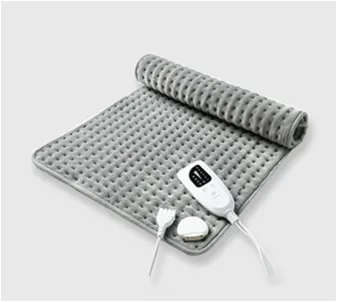
दिसम्बर . 11, 2024 09:31 Back to list
Calculating the Expenses Associated with Electric Blanket Usage
Understanding the Cost of Electric Blanket Use
As winter approaches and temperatures drop, many people turn to electric blankets for added warmth and comfort. While these cozy bedding accessories can provide significant relief from the cold, understanding the cost of using an electric blanket is essential for making informed financial decisions. This article will explore the energy consumption of electric blankets, their cost implications, and tips for using them effectively.
Energy Consumption of Electric Blankets
Electric blankets typically operate on low voltage, and their energy consumption can vary significantly depending on the model and settings. Most electric blankets consume between 50 to 200 watts of electricity, with settings that control how warm the blanket gets and how quickly it reaches that temperature.
For example, if you have a blanket that consumes 100 watts and you use it for 8 hours a night, the calculation for the energy used would be as follows
- Energy Consumption 100 watts = 0.1 kilowatts - Hours Used 8 hours - Total Energy Used 0.1 kW * 8 hours = 0.8 kWh
Next, to determine the cost of that energy usage, you will need to know your local electricity rates. For instance, if the rate is $0.13 per kWh, the calculation would be
- Cost of Usage 0.8 kWh * $0.13/kWh = $0.104
This means it would cost approximately 10 cents to run an electric blanket for 8 hours. Over the course of a month, using the blanket nightly would result in a cost of about $3.12, which is relatively economical compared to the expense of heating an entire room.
Cost Implications
cost of electric blanket use

Using electric blankets can be an economical alternative to central heating. Many households experience a significant spike in their energy bills during winter months due to heating needs. By using an electric blanket, one can potentially lower heating costs. By keeping the thermostat lower and relying on the blanket for warmth, the overall energy consumption for heating can be reduced.
Moreover, electric blankets come with features that promote energy efficiency. Many modern models include timers and automatic shut-off functions. These features not only enhance safety by preventing overheating but also ensure that power is not wasted when the blanket is not in use.
Tips for Effective Use
1. Choose the Right Setting Use lower settings for maintenance heat after you have warmed the bed, which can significantly reduce electricity use.
2. Preheat Your Bed Warm the bed before getting in and turn off or lower the setting once you're comfortable. This minimizes continuous energy consumption.
3. Use Together with Other Forms of Insulation Consider using an electric blanket in conjunction with warm pajamas and quality bedding to maximize warmth without having to rely solely on high heat.
4. Regular Maintenance Ensure your electric blanket is in good condition and review its manual for any safety recommendations. Replacing an old, inefficient model can save money over time.
5. Evaluate your electricity rate Keeping track of your local electricity rates can help you determine if using an electric blanket is cost-effective compared to other heating options.
Conclusion
Electric blankets can be a cost-effective and energy-efficient solution for staying warm during cold months. Understanding their energy consumption and cost implications can help you make informed decisions. With proper use, electric blankets not only provide comfort but can also contribute to lower energy bills, making them a smart choice for many households. Embrace the warmth while being mindful of your energy consumption!
-
Warm Comfort with Heated Mattress Solutions
Mar.27,2025
-
The Power of Heating Pads for Comfort
Mar.27,2025
-
Stay Warm and Comfortable with Targeted Heat Relief
Mar.27,2025
-
Maximize Your Comfort with Heated Bedding
Mar.27,2025
-
Heat Relief for Every Need
Mar.27,2025
-
Embrace Comfort with Heated Pads
Mar.27,2025
Realted Products



